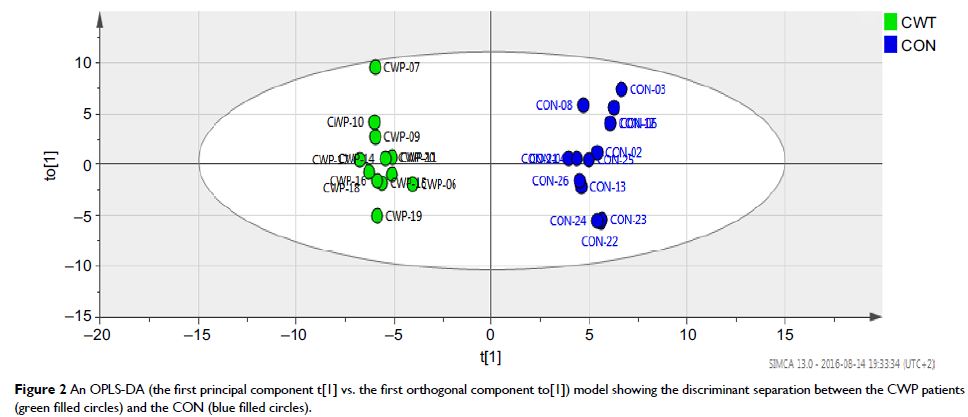9 0 6 7 6
论文已发表
注册即可获取德孚的最新动态
IF 收录期刊
- 2.6 Breast Cancer (Dove Med Press)
- 3.9 Clin Epidemiol
- 3.3 Cancer Manag Res
- 3.9 Infect Drug Resist
- 3.6 Clin Interv Aging
- 4.8 Drug Des Dev Ther
- 2.8 Int J Chronic Obstr
- 8.0 Int J Nanomed
- 2.3 Int J Women's Health
- 3.2 Neuropsych Dis Treat
- 4.0 OncoTargets Ther
- 2.2 Patient Prefer Adher
- 2.8 Ther Clin Risk Manag
- 2.7 J Pain Res
- 3.3 Diabet Metab Synd Ob
- 4.3 Psychol Res Behav Ma
- 3.4 Nat Sci Sleep
- 1.9 Pharmgenomics Pers Med
- 3.5 Risk Manag Healthc Policy
- 4.5 J Inflamm Res
- 2.3 Int J Gen Med
- 4.1 J Hepatocell Carcinoma
- 3.2 J Asthma Allergy
- 2.3 Clin Cosmet Investig Dermatol
- 3.3 J Multidiscip Healthc

Clear differences in cerebrospinal fluid proteome between women with chronic widespread pain and healthy women – a multivariate explorative cross-sectional study
Authors Olausson P, Ghafouri B, Bäckryd E, Gerdle B
Received 25 October 2016
Accepted for publication 22 December 2016
Published 13 March 2017 Volume 2017:10 Pages 575—590
DOI https://doi.org/10.2147/JPR.S125667
Checked for plagiarism Yes
Review by Single-blind
Peer reviewers approved by Dr Lucy Goodman
Peer reviewer comments 2
Editor who approved publication: Dr Michael Schatman
Introduction: Frequent
chronic local pain can develop into chronic widespread pain (CWP). The spread
of pain is correlated with pain intensity, anxiety, and depression, conditions
that ultimately lead to a poor quality of life. Knowledge is incomplete about
CWP’s etiology, although it has been suggested that both central
hyperexcitability and/or a combination with peripheral factors may be involved.
Cerebrospinal fluid (CSF) could act as a mirror for the central nervous system
as proteins are signal substances that activate the formation of algesics and
control nociceptive processes. To this end, this study investigates the CSF
protein expression in women with CWP and in female healthy controls.
Materials and methods: This study included 12 female patients with CWP
diagnosed according to the American College of Rheumatology criteria with 13
healthy age- and sex-matched pain-free subjects. All subjects went through a
clinical examination and answered a health questionnaire that registered
sociodemographic and anthropometric data, pain characteristics, psychological
status, and quality of life rating. CSF was collected by lumbar puncture from
each subject. Two-dimensional gel electrophoresis in combination with mass
spectrometry was used to analyze the CSF proteome. This study identifies
proteins that significantly discriminate between the two groups using
multivariate data analysis (MVDA) (i.e., orthogonal partial least squares
discriminant analysis [OPLS-DA]).
Results: There were no clinically significant levels of
psychological distress and catastrophization presented in subjects with CWP.
MVDA revealed a highly significant OPLS-DA model where 48 proteins from CSF
explained 91% (R 2) of the
variation and with a prediction of 90% (Q 2). The highest discriminating proteins were
metabolic, transport, stress, and inflammatory.
Conclusion: The highest discriminating proteins (11 proteins),
according to the literature, are involved in apoptotic regulations,
anti-inflammatory and anti-oxidative processes, the immune system, and
endogenous repair. The results of this explorative study may indicate the presence
of neuro-inflammation in the central nervous system of CWP patients. Future
studies should be larger and control for confounders and determine which
alterations are unspecific/general and which are specific changes.
Keywords: biomarkers, muscle pain, inflammation
